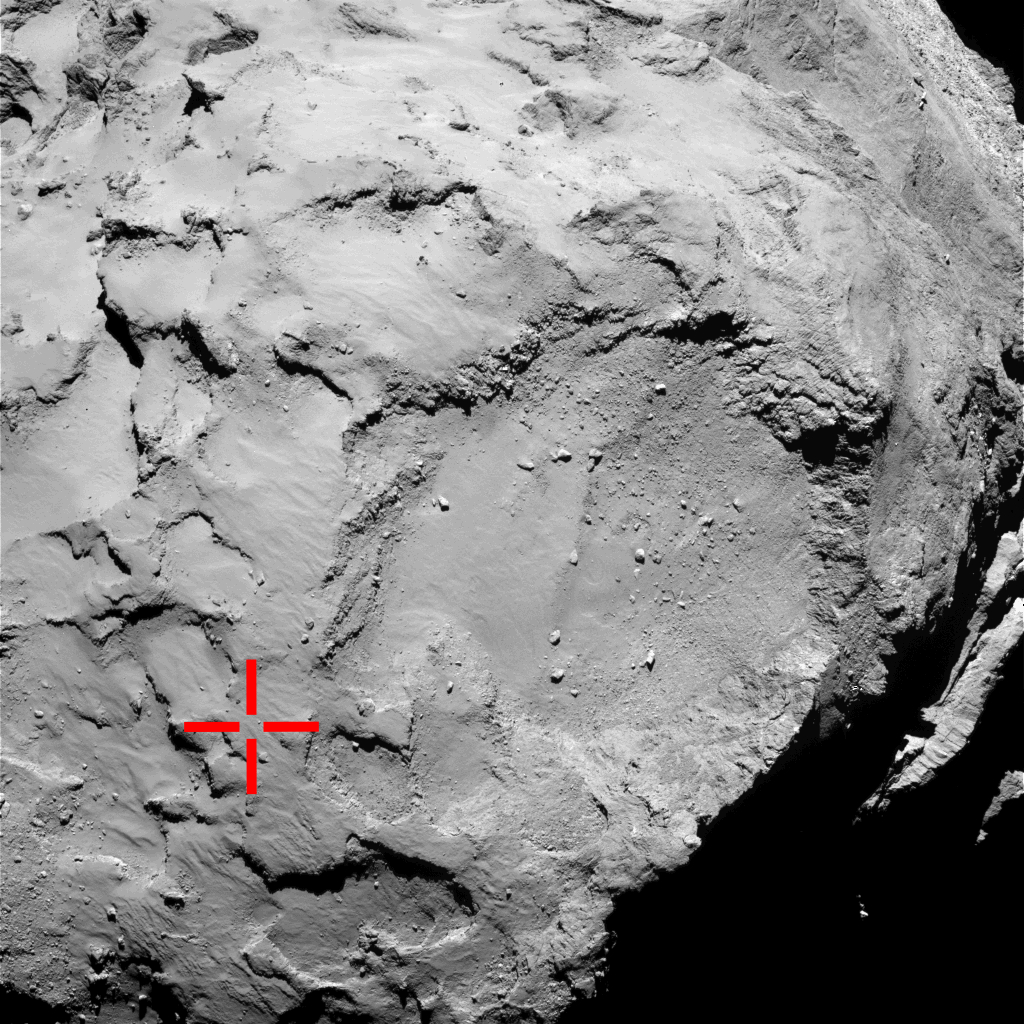QUOTE (aholub @ Nov 26 2014, 04:55 AM)

Brian, your simulation is very interesting, very nice and very promising. I think that you can quietly adjust the direction of the initial vector, because we do not know it well enough. I suppose that impact points then can be very close to the yellow area from the CONSERT measurements.
How high are the jumps? From the picture I estimate less than 500 meters, which would be consistent with my expectations.
Sorry I never replied to this! The jumps peak around 300-400 meters -- I'll post some more detailed results shortly.
I've been working on the initial conditions for the bounce and realized my assumptions about the apparent direction in the sequence of OSIRIS images is very wrong. I was estimating the initial direction by essentially assuming that the camera was looking directly down at the ground, while in fact Rosetta is passing by north of Philae and not looking directly down when those images were captured.
The angle between the local surface normal at the initial touchdown location and a vector pointing to Rosetta is about 21 deg. The resolution of the OSIRIS image is 0.28 m/pixel, so that means for every meter of altitude Philae has, there is about a 10 pixel offset between its projected location seen in the image and its actual ground-track location directly along the nadir. Most of my simulations place Philae with at least 75 m altitude at 15:43, even with low climb rates (it is in fact over a depressed region that stands out well in Mattias' landing site 3D model). That suggests the actual point on the ground directly under Philae is 750 pixels away from the apparent location.
Attached is the OSIRIS sequence image overlaid on top of the "First Touchdown" image (you can see the red crosshair mostly covered), where the 750 pixel radius circle is included as well as a red arrow indicating a rough estimate of the direction towards Rosetta -- if you could drop a laser pointer directly down to the comet from Philae it should strike the ground somewhere on this circle, likely at the angular location where the red arrow points. Of course this is a very rough calculation, but kind of sheds some light on the initial conditions of the bounce.
What about the other images capturing Philae before touchdown? That's complicated as seen in the other attached figures, where the plots show the relative trajectories for Rosetta (red) and Philae (blue), as well as Philae's ground-track (yellow), vectors from Rosetta to Philae at the time of each image (red), and drop lines from Philae to the actual location directly below (magenta)...

